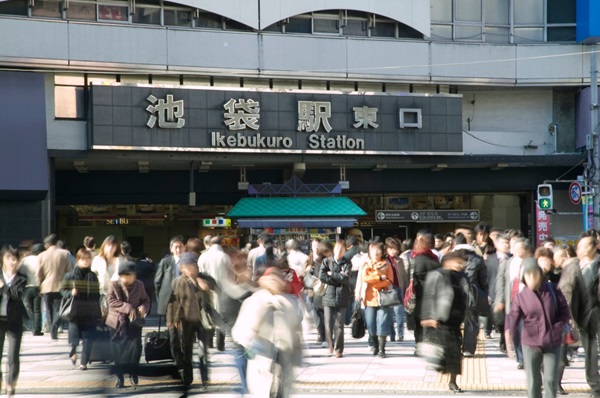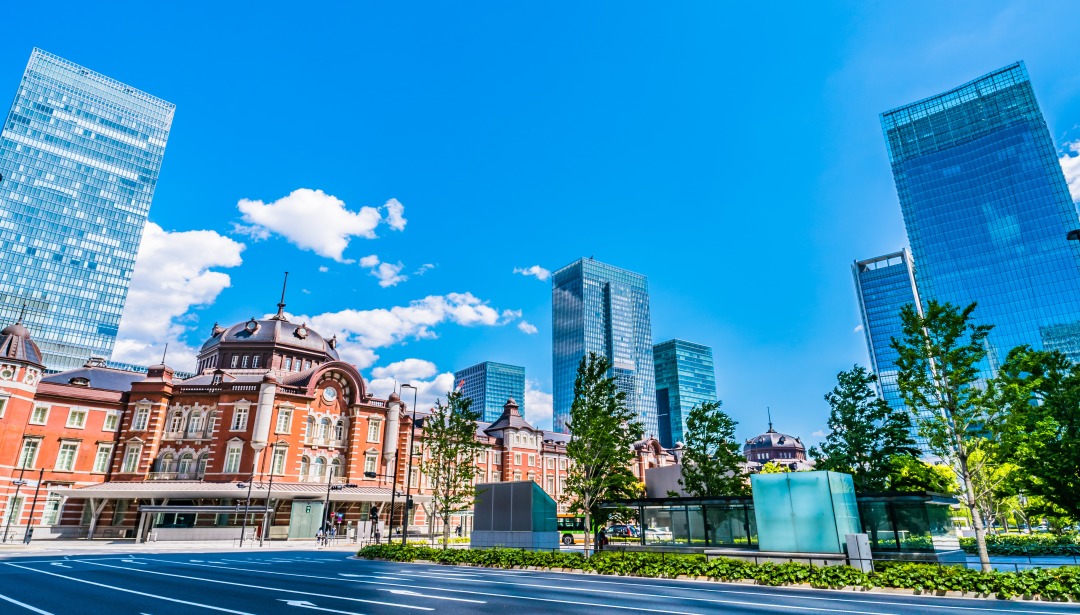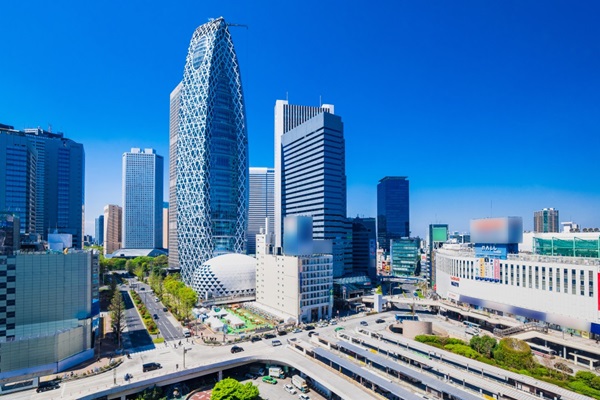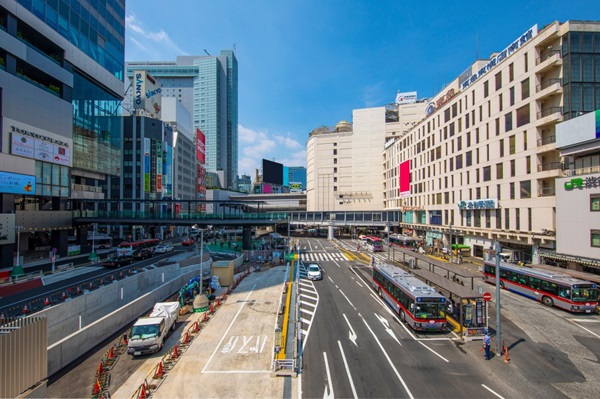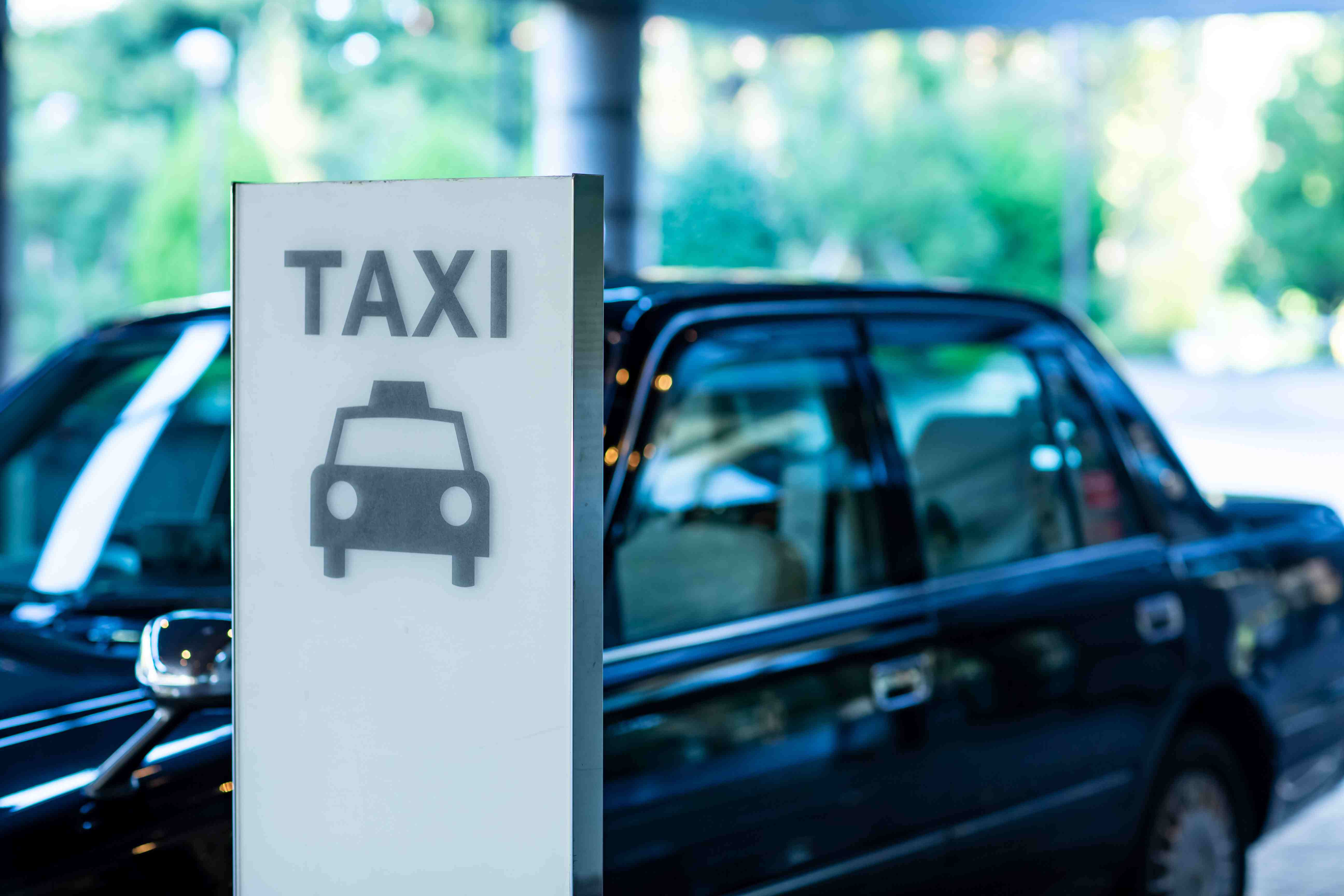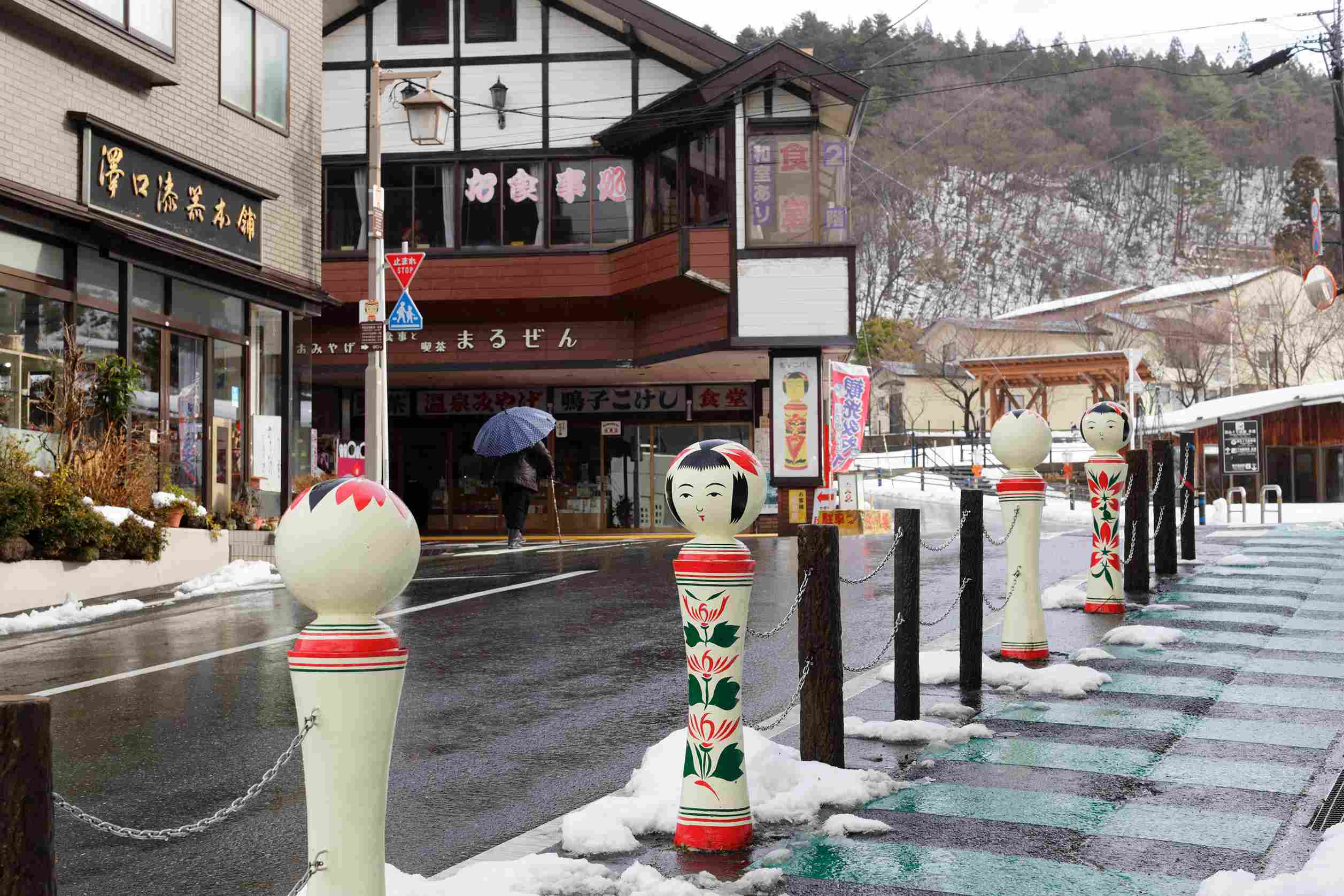In 2018, the population of Toshima Ward exceeded 290,000 people for the first time in 40 years ( maintaining over 290,000 people as of March 2024 ), and the Ikebukuro Station area, home to the ward's largest downtown area, is becoming even more lively. In addition, new spots are popping up one after another around Ikebukuro Station, and redevelopment is progressing.
In this article, in order to explore the appeal of the Ikebukuro Station area, which has high expectations as a sustainable development city , we will introduce a wide range of information, from basic information to the ease of living in the surrounding area, history, and future.
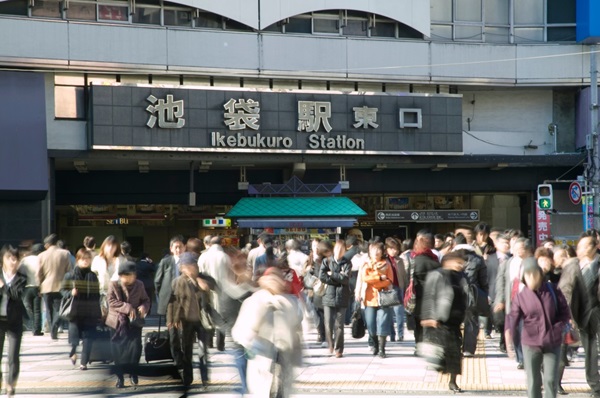
Basic information about Ikebukuro Station, the epicenter of art and culture
Ikebukuro Station is a station located in Minami-Ikebukuro, Toshima Ward, Tokyo. It is said that the place name “Ikebukuro” was derived from the pond called Fukuroike, which used to be located near the west exit of the station, but there are various theories.
Ikebukuro is a downtown area along with Shinjuku and Shibuya, and is home to electronics stores, large-scale commercial facilities, and various amusement facilities such as movie theaters and an aquarium. On the other hand, it is also famous as a city with thriving arts and culture. In 2014, Toshima Ward formulated the "International Arts and Culture City Initiative" and is working to create a city that is responsive to culture and diversity.
According to data on the number of passengers getting on and off by station released by the Ministry of Land, Infrastructure, Transport and Tourism in 2022, the average number of passengers getting on and off at Ikebukuro Station in 2021 was 814,980 people per day, making it the second-largest station in JR East.
Source: Ministry of Land, Infrastructure, Transport and Tourism National Land Numerical Information Download Site “ Data on the number of passengers getting on and off by station ”
Source: Statistical Information Research “ Statistics on the number of passengers getting on and off at Ikebukuro Station (JR East) ”
The congestion level at Ikebukuro Station per weekday is as follows.
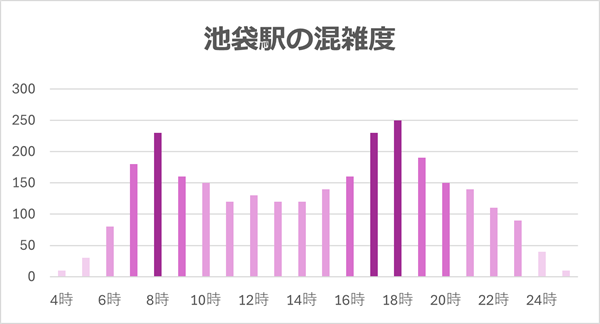
*Created independently by processing from JR East official website “Station congestion situation” and NAVITIME “Crowd forecast”
*Classified into four levels of congestion based on the numbers on the vertical axis. Very crowded (200-250), crowded (150-200), not very crowded (100-150), empty (0-100)
On weekends and holidays, the number of tourists and shoppers increases, making the area especially crowded during the day. Since there are large commercial facilities and event halls around Ikebukuro Station, it seems that many people tend to gather there. Another characteristic of this station is that many people come to Ikebukuro from the Saitama area on the Seibu Ikebukuro Line and Tobu Tojo Line, and from the Yokohama area on the Fukutoshin Line.
Route to Ikebukuro Station
There are a total of 8 lines that serve Ikebukuro Station:
JR East
● Saikyo Line/Kawagoe Line
● Shonan Shinjuku Line
● Yamanote Line
Subway
● Tokyo Metro Marunouchi Line
● Tokyo Metro Yurakucho Line
● Tokyo Metro Fukutoshin Line
Private railway
● Seibu Ikebukuro Line
● Tobu Tojo Line
If you use these routes, you can go to Tsukishima and Toyosu (Tokyo) to the east, Shakujii Park and Oizumi Gakuen (Tokyo), the birthplace of Japanese anime, to Chichibu (Saitama Prefecture) to the west, and Yokohama and Odawara (Kanagawa Prefecture) to the south. You can access Utsunomiya (Tochigi Prefecture) in a straight line to the north. In Tokyo, you can go to Ginza (Marunouchi Line), Nakameguro (Tokyu Toyoko Line, Fukutoshin Line), Toyosu (Yurakucho Line), etc. without changing trains.
Additionally, Toden Zoshigaya Station is within a 10-minute walk from Ikebukuro Station, making it easy to use the Toden Arakawa Line that passes through there.
Access from Ikebukuro Station to major stations and airports
We will introduce the main access methods from Ikebukuro Station to major stations and airports, as well as the travel times.
● Tokyo Station : 8 stations on the Tokyo Metro Marunouchi Line (approx. 20 minutes)
● Shinjuku Station : 1 station on the JR Saikyo Line or JR Shonan-Shinjuku Line (approx. 5 minutes)
● Shibuya Station : 2 stations on the JR Saikyo Line or JR Shonan-Shinjuku Line (about 15 minutes)
● Haneda Airport (Terminal 2) : Transfer at Tennozu Isle Station on the Rinkai Line (directly connected to the JR Saikyo Line) and take the Tokyo Monorail (toward Haneda Airport/all stops) for 9 stops (Haneda Airport Terminal 2 Station)
● Narita Airport (Terminal 1) : Transfer at Nippori Station on the JR Yamanote Line (outer loop) and take the Keisei Skyliner (limited express) 2 stops (Narita Airport Station)
Tokyo Station, Shinjuku Station, and Shibuya Station can all be accessed within 20 minutes without changing trains.
Sightseeing spots that can be accessed directly from Ikebukuro Station
From Ikebukuro Station, you can take the limited express Spacia to Tobu Nikko and Kinugawa Onsen. In addition, many trains heading towards Saitama run through the station, so you can directly access Kawagoe on the Fukutoshin Line or Saikyo Line, or Seibu Kyujo-mae or Seibu Chichibu on the limited express Laview.
You can also go to the following tourist destinations without changing trains.
● Yokohama (Shonan-Shinjuku Line, Toyoko Line Direct Fukutoshin Line)
● Minato Mirai, Motomachi/Chinatown (Minato Mirai Line direct Toyoko Line)
● Kamakura (Shonan Shinjuku Line)
● Utsunomiya (Shonan Shinjuku Line)
In this way, Ikebukuro Station is a convenient station for sightseeing and leisure activities.
Why are there so many foreigners in the Ikebukuro area?!
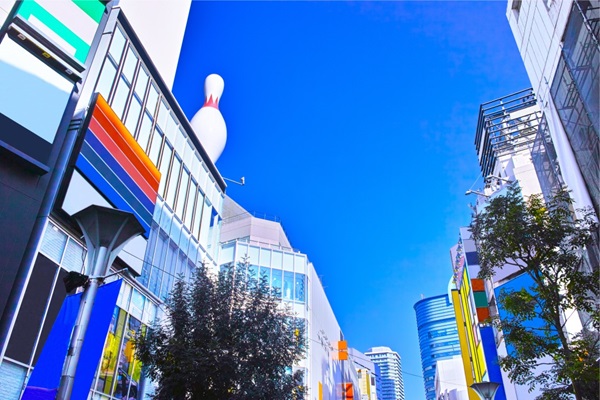
Toshima Ward's “Urban Development Master Plan” positions Higashi-Ikebukuro (the east exit area of Ikebukuro Station) as a “subcenter full of diverse attractions.” This suggests that Toshima Ward clearly differentiates the development of Ikebukuro into east and west.
Source: Toshima Ward “ Ikebukuro Subcenter Development Guidelines ”
The east side of Ikebukuro Station is lined with skyscrapers, including Sunshine 60, and there are many amusement facilities such as movie theaters and game centers. In particular, Round One, which has bowling and karaoke all in one building, is gaining popularity as a playground among young people and foreigners.
Along with Akihabara, the east side of Ikebukuro Station is also famous as a sacred place for otaku culture. It is lined with stores that sell various anime goods, such as Animate Main Store and Otome Road.
It is also a convenient area for shopping, with large electronic stores such as Yamada Denki and Bic Camera, as well as large stores such as Junkudo Bookstore and Loft.
On the other hand, the west side has a strong focus on art and culture, and is dotted with parks and theaters. The areas around Ikebukuro West Exit Park and Tokyo Metropolitan Theater are lit up at night and are popular as romantic spaces. In addition, Hotel Metropolitan, a full-fledged city hotel that was the first time that JR Group, the predecessor of JR, participated in the investment and management, has become a landmark.
In this way, the city has different faces, with the east being a large-scale commercial city and the west being a cultural city with a strong artistic focus.
As of January 2024, the number of foreigners living around Ikebukuro Station (Toshima Ward) is 32,732. The percentage of foreigners living in Toshima Ward is around 8%. Toshima Ward is an area with a large number of foreigners, as the national population ratio of foreigners is approximately 2%.
Approximately 50% of foreign residents are Chinese nationals. This is likely due to the rapid increase in immigration from China in the late 1980s, coupled with the international situation, and the fact that rent prices around Ikebukuro are relatively reasonable.
Due to the large number of Chinese nationals, there are Chinese-run Chinese restaurants on the north side of the station where you can enjoy authentic Chinese flavors, as well as a supermarket catering to Chinese people. As you can see, the area around Ikebukuro Station is an area with a rich international flavor, where you can feel Chinese culture.
The history of Ikebukuro Station, which developed from a quiet station to one of Japan's leading terminal stations
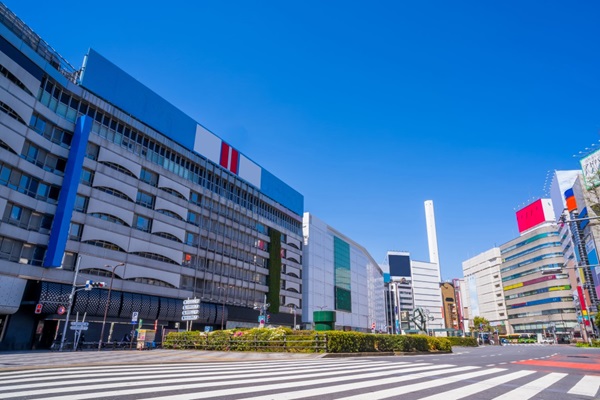
In fact, when Ikebukuro Station was first established, the area around the station was a vast expanse of wilderness with few people. Isn't it an unimaginable sight from today's Ikebukuro Station, which has become one of Tokyo's leading downtown areas?
The Shinagawa Line (Shinagawa - Akabane), which opened in 1885, and the Tsuchiura Line (Tabata - Tsuchiura), which opened in 1886, had the role of transporting coal from the Joban coalfields that spread from Fukushima Prefecture to Ibaraki Prefecture to Tokyo. However, this route was a significant detour to get to Tokyo. Therefore, a plan was made to build stations in Zoshigaya and Mejiro and create a new line heading towards Tabata Station.
However, this plan is not straightforward. The project stalled due to land issues around Zoshigaya and Mejiro and opposition from local residents.
Everyone involved in this plan is at a loss, when suddenly attention is drawn to Ikebukuro. Surprisingly, Ikebukuro met two conditions for the construction of this new route: "geographically easy to construct" and "no opposition from surrounding residents." Everyone involved was overjoyed and said, "We've found the perfect location!" Therefore, Ikebukuro was successfully selected as a connecting station for the new line, the Toshima Line.
Don't you have a question here? "Unlike Zoshigaya or Mejiro, the area around Ikebukuro Station has so few residents that there are no protests, so is it okay to build a station in a place where there are no prospects for using it?"
Please rest assured. There's a good reason for this. "We wanted to build the Toshima Line to efficiently transport coal to Tokyo!" and so we wanted to focus on cargo transportation rather than passenger transportation. The lack of housing around the station was not a major problem.
After many twists and turns, Ikebukuro Station was opened in 1903 due to the perfect fit of practicality and geographical conditions.
Furthermore, with the opening of Toshima Normal School (now Tokyo Gakugei University) in 1909 and the relocation of Rikkyo University in 1918, the number of students using Ikebukuro Station increased rapidly. There are a lot of young people here, and the city has become very lively!
The number of users from Saitama increased with the opening of Tojo Railway (now Tobu Railway) in 1914 and Musashino Railway (now Seibu Railway) in 1915. From this period, Ikebukuro Station began to develop further as a transportation hub.
In 1935, Kikuya Department Store (currently Seibu Ikebukuro Main Store) opened at the east exit. It was one of the many station buildings that were popping up all over Tokyo during this period, and was a popular place for station users to enjoy shopping and gourmet food.
After that, department stores continued to open at Ikebukuro Station, and in 1962, Tobu Department Store Ikebukuro Main Store opened at the west exit. It became a hot topic as a terminal station with huge department stores on both the east and west sides, and the number of users continued to increase. In 1954, the Marunouchi Line opened, making access to Ikebukuro Station even more convenient.
Time passes and it's modern times. The Ikebukuro Station area is also riding a wave of development. In 2015, the Toshima Ward Office was relocated towards Higashi-Ikebukuro as a new government building called Toshima Ecomuse Town, which is a 49-story building with an integrated condominium building, which gives the impression that it is an advanced initiative that integrates administrative and residential areas.
In addition, a large-scale redevelopment is currently underway in the west exit area to improve access from the complex structure of Ikebukuro Station to the outside of the station. Construction of a new complex is also planned, with completion targeted for 2043.
Spots around Ikebukuro Station where you can enjoy art and culture
Around Ikebukuro Station, there are highly convenient facilities and spots where you can enjoy a variety of art and culture. We will introduce recommended spots that are deeply intertwined with Ikebukuro's history.
"Sunshine City" where you can enjoy everything from leisure to shopping
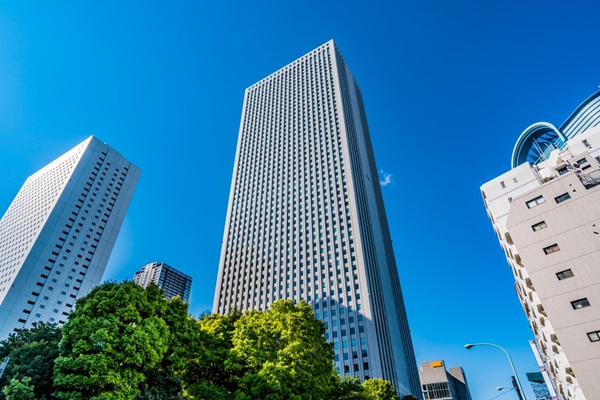
Sunshine City is a complex consisting of five buildings that receives over 30 million tourists annually. There are a variety of facilities including an aquarium, an observatory, shopping centers, theaters, restaurants, and hotels.
Sunshine Aquarium is the only place where you can see penguins that look like they are flying in the sky in the heart of the city. On the observation deck on the 60th floor, a new sky park called "Sunshine 60 Observatory Tenbou Park" will open in 2023. The space is covered with artificial grass and lush green plants are placed here and there to create a comfortable space.
The shopping center is filled with a variety of apparel shops and miscellaneous goods stores. There are a wide variety of restaurants, and you can enjoy everything from Japanese food to cuisine from around the world to character cafes such as Pokemon and Sanrio.
Sunshine City official website
"Tokyo Metropolitan Theater" where you can experience theater and music in a powerful hall
Tokyo Metropolitan Theater is a comprehensive arts and culture facility located at the west exit of Ikebukuro Station. It was opened in 1990 by the Tokyo Metropolitan Government to promote art and culture and promote international exchange. In addition to a large hall with one of the world's largest pipe organs and a medium hall for theater and dance performances, there are also exhibition spaces and meeting rooms, which will be used as a venue for artistic activities.
It was renovated and reopened in 2012, and since then has been promoting creative dissemination and educational outreach as a hub for fostering the next generation of arts and culture, interacting with theaters and concert halls from Japan and abroad.
For example, the NHK Symphony Orchestra (commonly known as N Symphony), one of the three major orchestras in Japan, will perform at the Tokyo Metropolitan Theatre. There will also be a concert where you can enjoy the "game music" of "Dragon Quest," a game that is popular overseas and was actually performed by the NHK Symphony Orchestra.
It is a hub of art and culture representing Japan and is a must-visit for foreigners.
Tokyo Metropolitan Theatre official website
An open and fantastic place to relax "Ikebukuro West Exit Park GLOBAL RING"
Ikebukuro West Exit Park was reborn as "GLOBAL RING" in 2019. The name comes from "Maruike," which is said to be the origin of the name of Ikebukuro, which once existed in this area.
It has become a symbol of Toshima Ward's "International Art and Culture City Plan," and serves as a base for regional revitalization, where you can enjoy a variety of art and culture. The park has an open-air theater and a large screen, and the music, lights, and fountains fascinate visitors.
At the cafe in the park, you can enjoy an Asian tea menu inspired by various countries, such as Sakura Matcha Latte inspired by Japan, Mangorgeous Mint Tea inspired by China, and Strawberry and Yuzu Tea Lemonade inspired by Korea.
Ikebukuro West Exit Park official website
"Hareza Ikebukuro" where theaters, parks, and community centers gather in one area
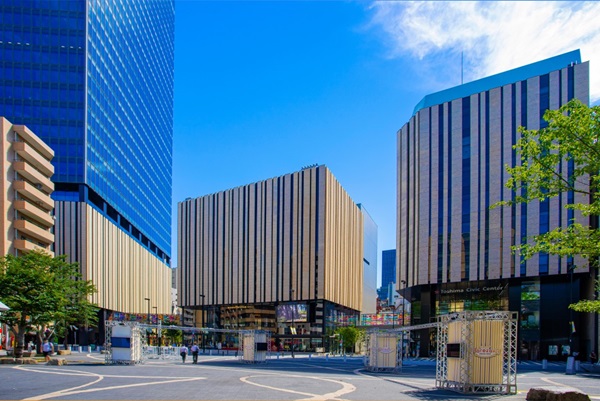
Hareza Ikebukuro is a complex located in the center of Ikebukuro that opened in 2020 at the east exit of Ikebukuro Station. The name comes from a combination of ``hare no ba'', a special place to dress up and go out, and ``za'', a place where many people gather.
Ikebukuro is home to eight theaters, a unique attraction that is known for its thriving arts and culture scene. Additionally, the Toshima Civic Center at the entrance gate serves as a base for residents to express themselves and create culture, and the interior of the building uses wood from Chichibu, our sister city.
Naka Ikebukuro Park has an Animate Café stand, which befits Ikebukuro, a sacred place for anime. Cafe menus are also sold in collaboration with various anime, including famous works such as "Mobile Suit Gundam SEED FREEDOM" and "Rurouni Kenshin," making it an attractive spot for anime fans.
Hareza Ikebukuro Official Site
Trivia about “East and West” related to Ikebukuro Station
The reason why “East is Seibu and West is Tobu”
One of the things that can be confusing when coming to Ikebukuro Station for the first time is that the east exit has the "Seibu"(the Kanji “sei” means west in Japanese) Ikebukuro Line and the "Seibu" Department Store, while the west exit has the "Tobu"(the Kanji “to” means east in Japanese) tojo Line and the "Tobu" Department Store.
The reason why this situation happened is that Tojo Railway, the predecessor of Tobu Railway, first laid the line to the west. The Tojo Railway was named after the planned route from Tokyo to Joshu (Gunma Prefecture). Therefore, the station was placed on the west side instead of the east side for the line heading from Ikebukuro to Kawagoe.
Later, Kikuya Department Store (now Seibu Department Store) opened at the east exit, and inspired by this, Toyoko Department Store opened at the west exit in 1950. In 1962, Tobu Department Store opened at the west exit, and in 1964, surprisingly, Toyoko Department Store was transferred to Tobu Department Store.
This process gave rise to a unique regional character, with Seibu in the east and Tobu in the west.
What is the "Bikkuri Guard" that connects east and west on the south side of Ikebukuro Station?
On the south side of Ikebukuro Station, there is a railway bridge called ``Bikkuri Guard'' . It is an important point connecting the east and west of Ikebukuro Station.
Even so, the name "Bikkuri Guard" makes me curious. The official name of this railway bridge is ``Todo Ikebukuro Overpass'', but there are various theories as to why the word ``Bikkuri'' was added to the name.
The most likely name comes from the fact that people and horses were startled by the roar of a passing train echoing through the guard. Other origins are said to be as follows.
● As it passed through the guard, drainage water from the steam locomotive fell under the bridge, surprising passersby.
● The road under the guardrail is narrow, making it difficult for cars to pass each other, making it difficult for oncoming cars to come, so passersby was surprised when they came.
● The drainage was poor and the area under the guard looked like a pond, which surprised passersby.
Nowadays, the roads are widened and the roads used by people are barrier-free, making it convenient to travel between the east and west of Ikebukuro Station.
Summary
When Ikebukuro Station first opened, the area around the station was vast and deserted, far beyond the bustling downtown area it is today. The number of users of Ikebukuro Station has increased rapidly as lines connecting to the station have been opened one after another, and schools and commercial facilities have opened in the surrounding area, and it is now the station with the second highest number of passengers after Shinjuku Station. It has developed.
In addition, it will become easier to travel between the east and west areas in the future, and the area around Ikebukuro Station is expected to become a hub of international exchange.
If you are considering purchasing real estate near Ikebukuro Station, please refer to the convenience of Ikebukuro Station and the ease of living around the station introduced in this article.


